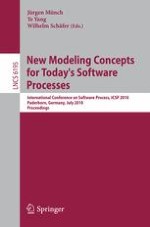2010 was the first time that the International Conference on Software Process was held autonomously and not co-located with a larger conference. This was a special challenge and we are glad that the conference gained a lot of attention, a significant number of contributions and many highly interested participants from industry and academia. This volume contains the papers presented at ICSP 2010 held in Paderborn, G- many, during July 8-9, 2010. ICSP 2010 was the fourth conference of the ICSP series. The conference provided a forum for researchers and industrial practitioners to - change new research results, experiences, and findings in the area of software and system process modeling and management. The increasing distribution of development activities, new development paradigms such as cloud computing, new classes of systems such as cyber-physical systems, and short technology cycles are currently driving forces for the software domain. They require appropriate answers with respect to process models and management, suitable modeling concepts, and an understanding of the effects of the processes in specific environments and domains. Many papers in the proceedings address these issues.
